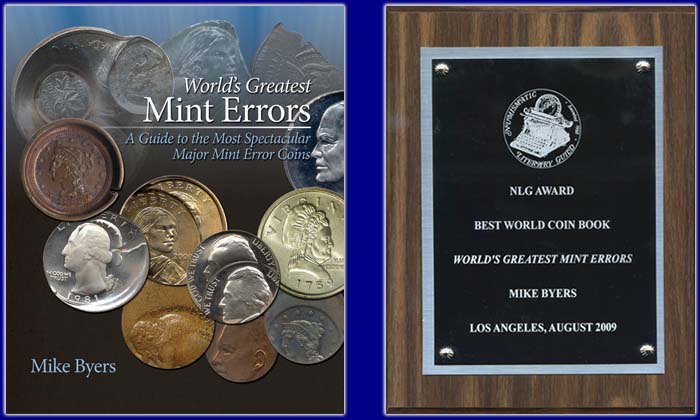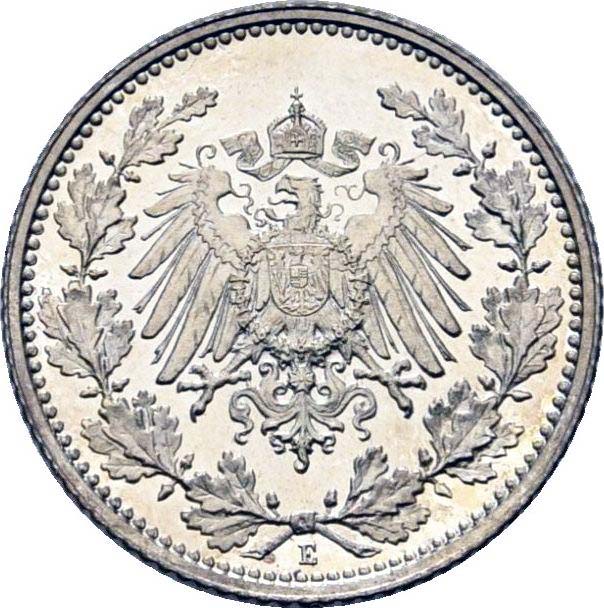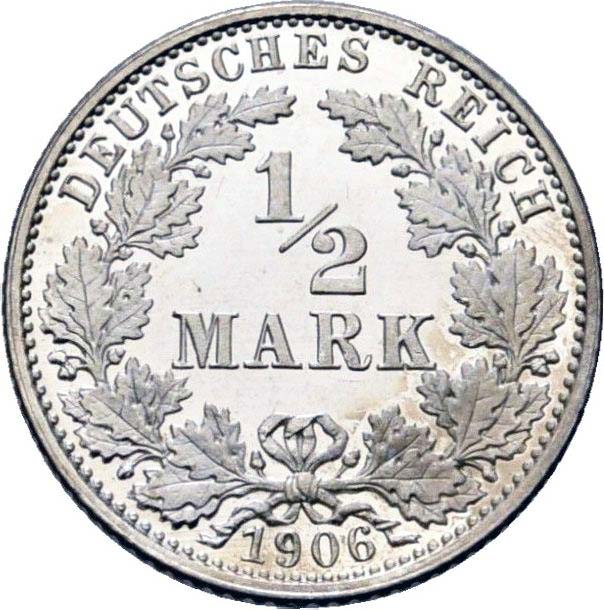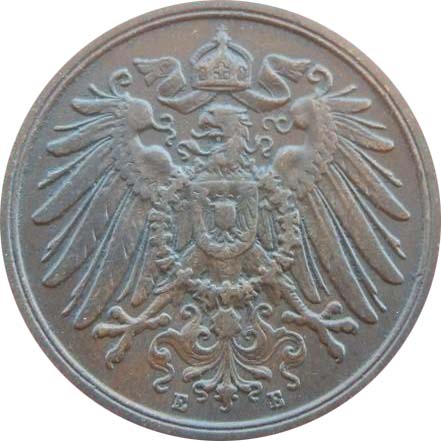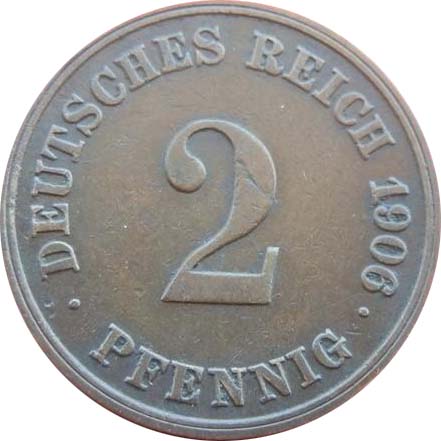1906E Germany 2 Pfennig
Muled With ½ Mark Obverse
NGC MS 66 BN
UNIQUE
$20,000
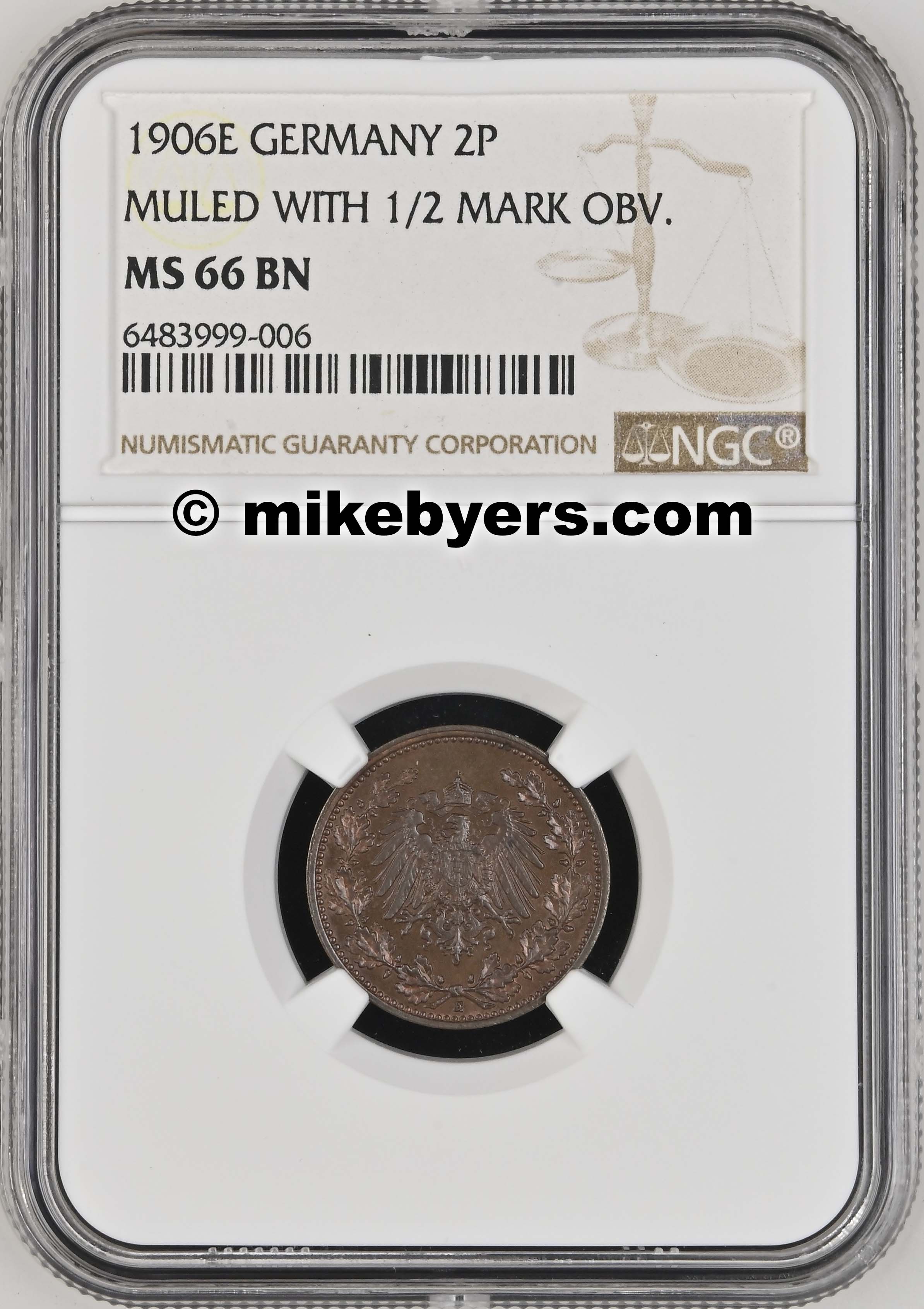
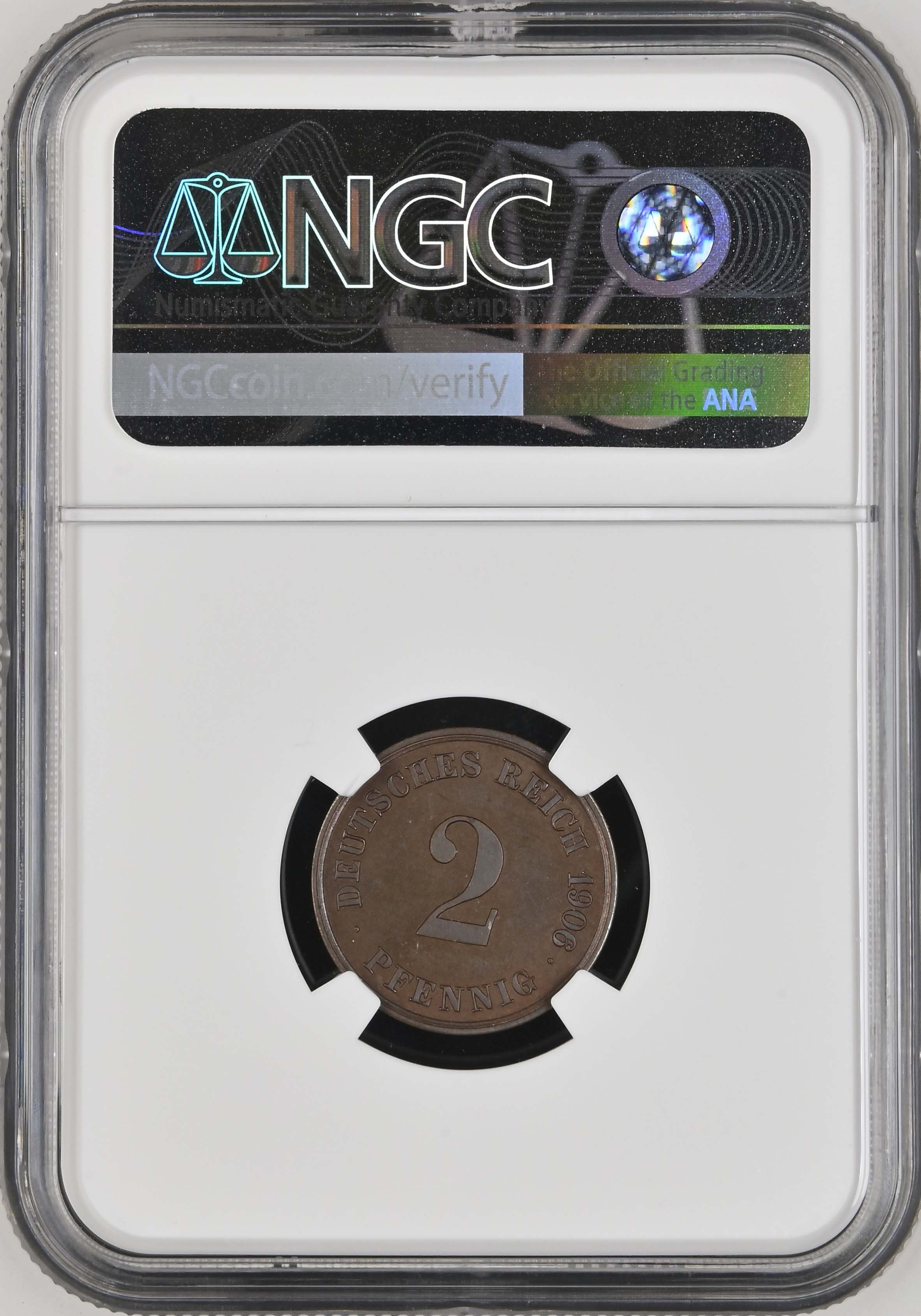
A mule occurs when a coin is produced with mismatched dies. There are many combinations of mules, depending on how they occur. Some mules are struck with two obverse or two reverse dies (two-headed or two-tailed). Other mules involve dies with different denominations that strike coins with the same metallic composition. One of the rarest types of mules involves dies with different denominations that would have struck coins with different metallic compositions. This German 2 Pfennig muled with a ½ Mark obverse is one of the rarest types and is considered unique.
The obverse of this mule was struck by a ½ Mark obverse die of Wilhelm II with the E Mint Mark for the Muldenhütten Mint. This ½ Mark was struck from 1905 to 1919 and is 90% Silver. The weight is 2.7 grams with a diameter of 20 mm and a thickness of 1.05 mm.
The reverse of this mule was struck by a 1906 2 Pfennig reverse die of Wilhelm II. The 2 Pfennig was struck from 1904-1916 with a composition of copper. The weight is 3.333 grams with a diameter of 20 mm and a thickness of 1.5 mm.
The fascinating aspect of this muled ½ Mark and 2 Pfennig is that both dies have a diameter of 20 mm. It is either a piece de caprice and was struck intentionally, or it was accidentally struck when a mint employee installed the wrong obverse die into the coining press. Either way, it is an incredible rarity and was authenticated and certified by NGC.
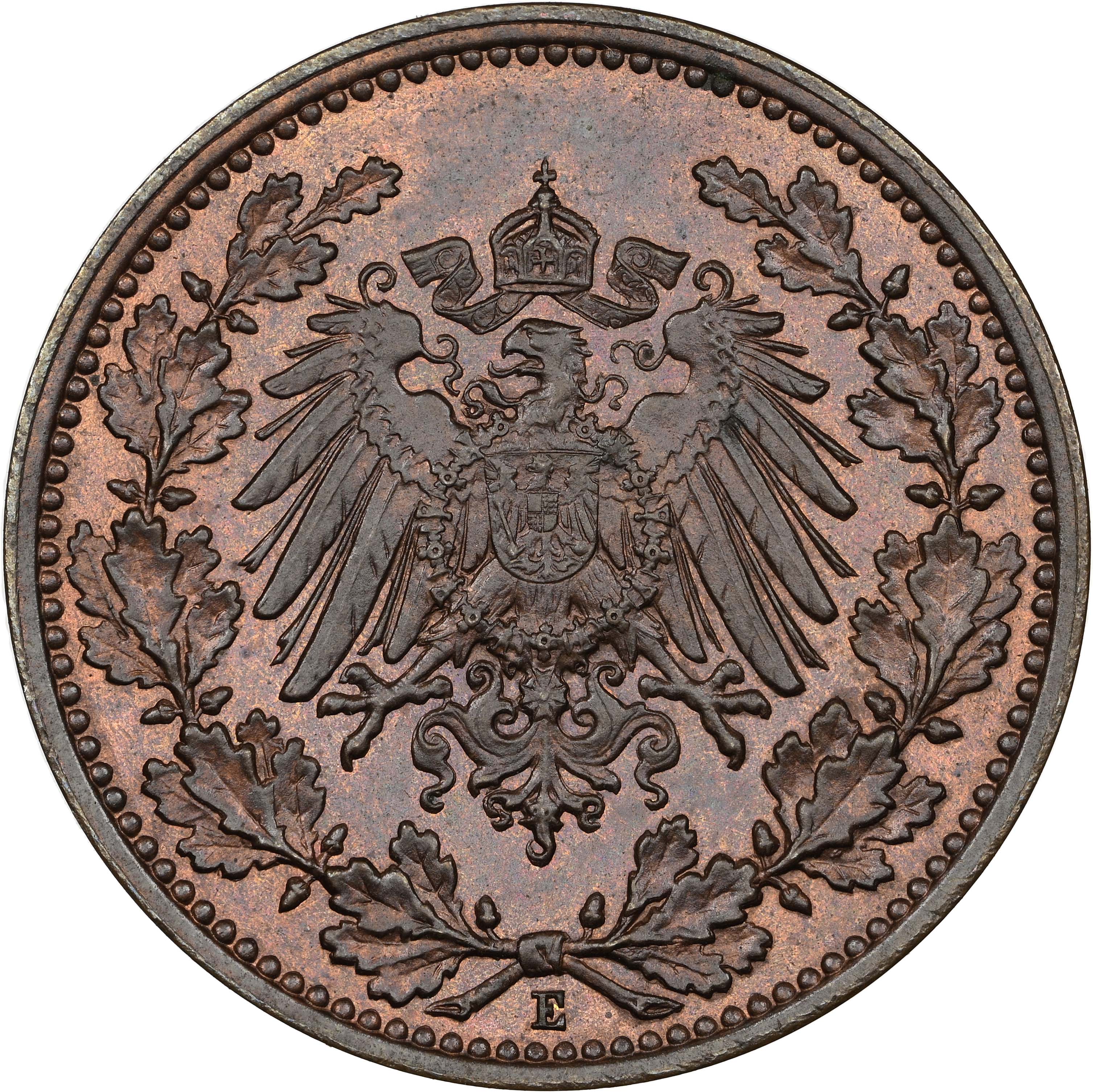
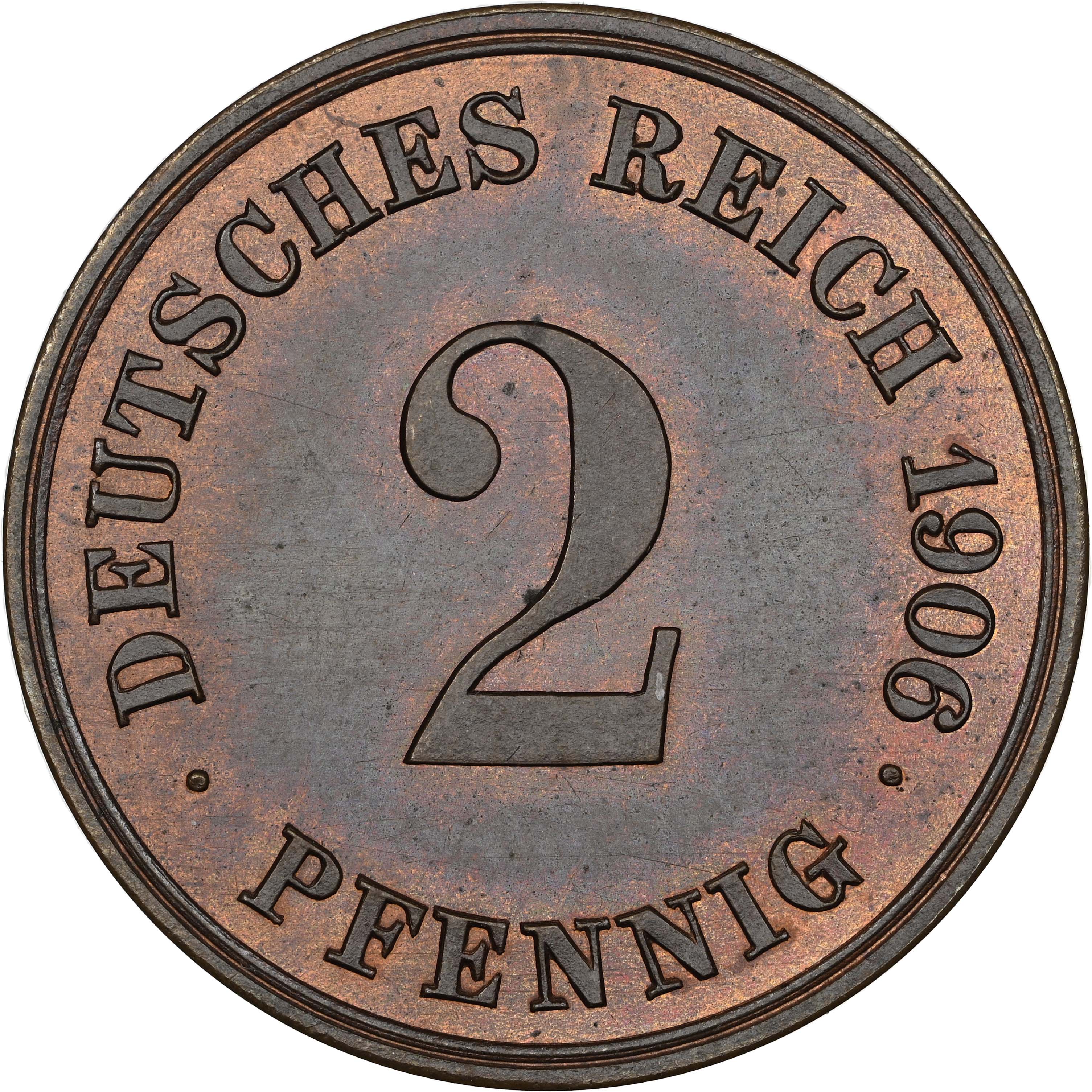
|

Featured on the cover of Mint Error News Magazine Issue 85:
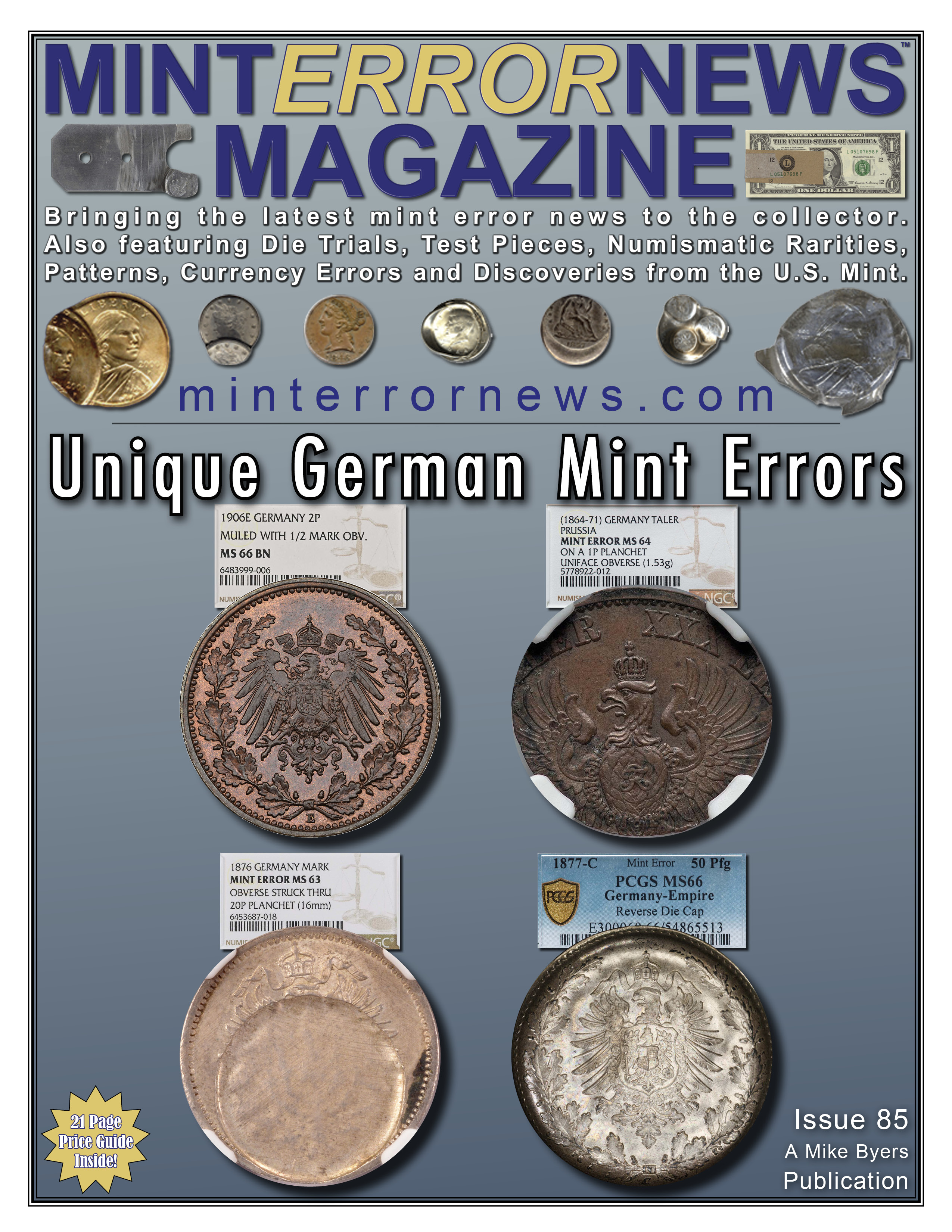
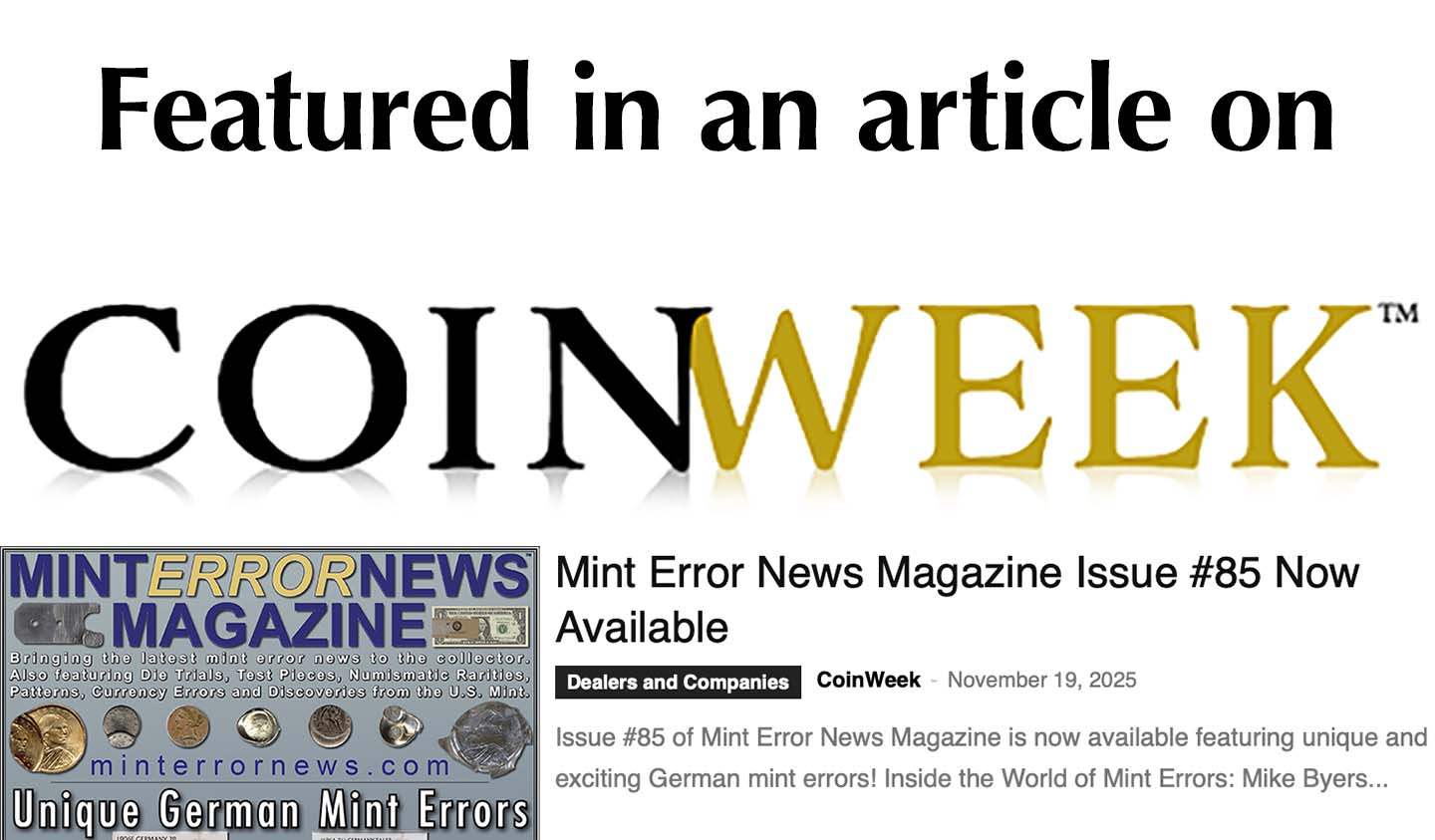
Mules are featured in my NLG Award winning book,
World's Greatest Mint Errors.
